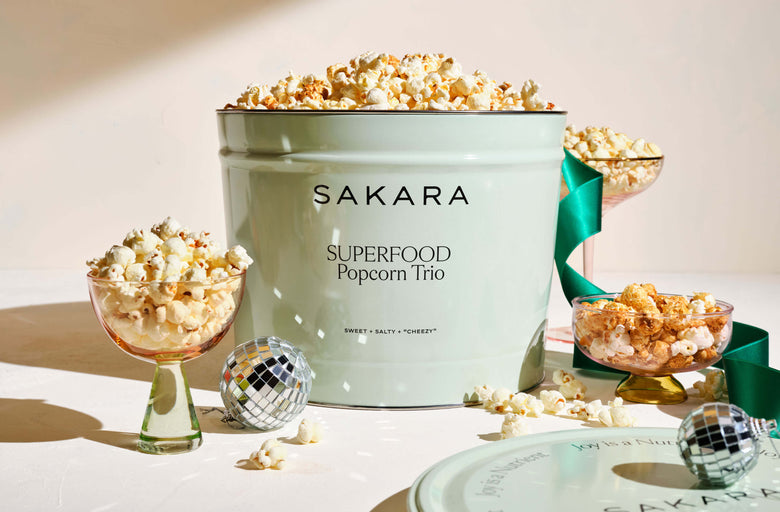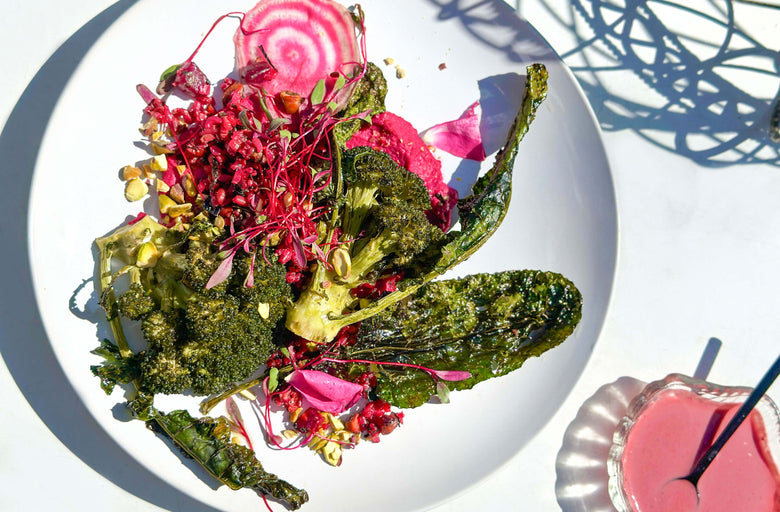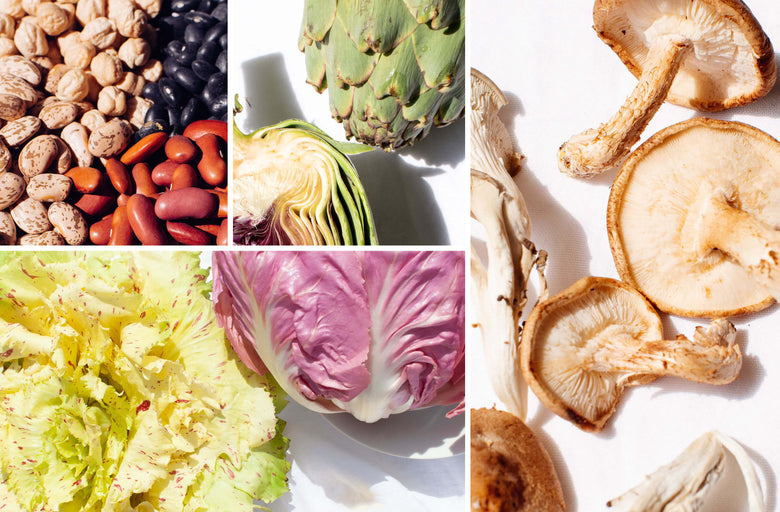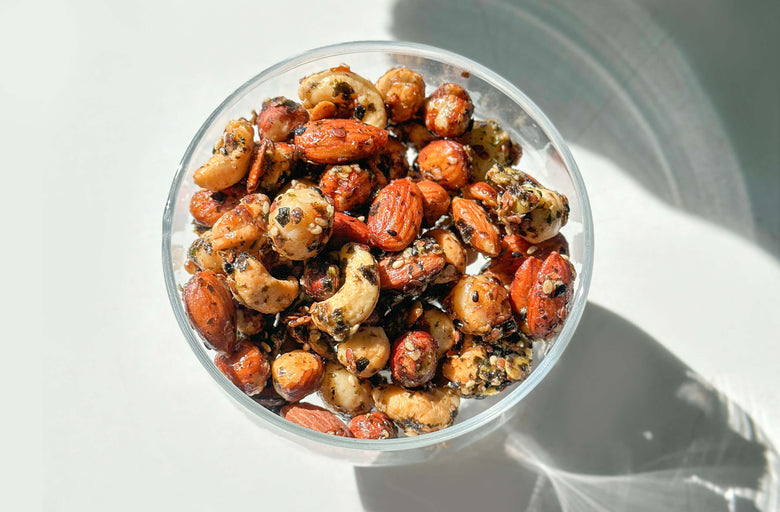Female pleasure shouldn't be so taboo, and yet, there remains too many unanswered questions, quiet Google searches, and unsatisfied lovers. Enter Orgasmic Meditation, a modality of partner work in which it's ALL about the woman, and focuses on how together— patiently, rhythmically and through "speaking your sensations" —we can receive as much as we're giving. This idea that an orgasm is a wellness practice is a powerful one, so we sat with the Director of Brand at One Taste, and OM (orgasmic meditation) coach, Maya Block, who shared with us how to practice OM, break free from obligation and productivity, and access deep pleasure.
Can you explain your background and what the catalyst was for you to get involved with Orgasmic Meditation? What was your first OM experience like?
I first heard about OM from a friend 9 years ago in Brooklyn. At the time, sitting meditation wasn't so popular, so OM was fully off the map. Of course, I was immediately interested. I love trying new experiences and exploring life’s deeper questions.
Growing up surrounded by open-minded artists, I never realized how limited my actual knowledge of orgasm was. My first OM really defined the decade-long journey which followed. I laid there for 15 minutes, lights on, legs butterflied open, the most sensitive stroking of my clitoris... and I didn’t feel a thing. I could not slow down my thoughts enough to be present for what was happening. I couldn’t not hold my breath. I never realized how hard letting go was until that moment. From that moment on, I decided I didn't want to go another day of my life trapped outside of my experiences, away from the nourishing pleasure of life.
Let's back up a little bit: What is Orgasmic Meditation? How is it different from typical meditation? Are you thinking about different things, breathing differently? Is reaching climax completely mental, not physical at all?
Orgasmic Meditation is a 15-minute mindfulness practice combining the power of attention with the experience of orgasm. We redefine orgasm, from an event (the moment of climax), to a state of being. In OM, you learn how to feel the full range of sensations in your body. It is a fluid, non-linear approach. This is opposed to the typical goal-oriented drive towards climax that can take us out of the moment. In OM, a partner gently strokes a woman’s clitoris with no goal other than to feel. Taking off the goal and pressure is such a relief. People experience increased happiness, less stress and anxiety, and more empathetic, fulfilling relationships as a result. We recommend separating it from your sex life and treating it like you would yoga, meditation, running, or music. A simple, repeatable practice to improve your whole wellbeing.
I've read that it's like "yoga for your sex life"; what does that mean for you?
In a time when the importance of wellness has been extended into almost every aspect of our lives, one key area has been left out: our sexuality. OM is the missing link - bringing mindfulness to the erotic, to your body and connection. We all enter intimate experiences with the expectation that we should already know how to navigate, and the results usually leave us lost. OM opens up our ability to know, feel, and speak our desires. It opens up emotional intelligence, where we can sense the world around us with more acuity. The same way that you work on yourself in yoga and then everything in the rest of your day feels more easeful, when you OM regularly you are filled with a baseline of connection - to yourself, to your sexuality and to your partner - that overflows into everything you do.
Do you have to have a partner to OM?
OM is a partnered practice, so yes, you need another person to OM. In the same way that you can’t tickle yourself, you can’t take yourself out of control. Because the practice requires connection, you get to explore your relationship to connection as part of it. How is it easy? Where do you disconnect? What helps you open? You begin to find how connection is strengthened in all aspects of your life.
Explain the coaching process- what are 2 or 3 steps we can do at home to properly OM?
The best way to learn to OM is to explore our online class and web app. It walks you step by step through the philosophy of OM and the technical experience. The most important aspects to know are:
- Always keep OM to 15 minutes. This lets both people fully let go into the experience and get the most benefits.
- Set a time to OM. While our intimate life is usually dictated by when we feel turned on, you don’t have to be in any particular mood to OM. Just like making it to the gym, scheduling your OM practice time increases the likelihood that it will happen.
- As the stroker, stroke as lightly as you would stroke your eyelid. OM is all about increasing sensitivity in both partners. You want to lightly brush, not rub, your partner's clitoris.
- As the strokee, relax your whole body. Bring all of your attention right to the point of contact. As thoughts arise, come back to the physical sensation you feel in your body. Allow yourself to receive.
Can you explain the process of how to "speak your sensations"?
Very often, when someone is first introduced to OM and asked what sensations they feel, they either say, “I feel good” or “I didn’t feel anything.” With some dedicated excavation, they may be able to describe one sensation in their body. “I felt a flush of heat across my cheeks”, “I felt a slow buzz in my finger.” We have not been trained to speak about our sensations. Yet when we do, we connect our thinking mind to our feeling body. When we slow down and describe our sensations without judgement, we can increase the nuance and subtlety of what we feel - and are able to feel more overall. One of my favorite quotes is “our inability to describe the extraordinary has our experience of it atrophy.” We practice expanding our ability to express the extraordinary.
How does this practice help you tap into confidence, freedom, fearlessness, etc...?
Desire is one of the most powerful, and least understood, forces in our society. As I watch person after person develop a personal relationship with what they want, stripped from ideas of what they should want, they feel more free than ever. Moving from a place of obligation to desire gives one access to a certain kind of fuel for living. Rather than being dragged along by thoughts of what one should do, one is propelled by what they desire to do.
Why do you think pleasure is such an important piece of the human experience and how can we infuse it into more of our daily practices?
Our society is so deeply conditioned by ideas of production and obligation. You are a worthy person if you produce a lot. You are a good person if you fulfill your obligation. Now, creating and having integrity are not entirely bad, but when they don't have the nourishment of pleasure, of desire, of connection, they become dry shells of experience. Pleasure is what has life come alive. But it can also be misleading. A lot of us have struggled with addiction - attachment to forms of pleasure that have diminishing results. Therefore, having a practice that brings intrinsic pleasure, healthy pleasure, is key. That's what I get through OM.
Can you share some of your other self-care rituals + wellness habits that complement the practice of OM?
I love finding practices to create my best life. I categorize them by the effects they produce. Clearing, power-generating, and reflective. Clearing practices help me clean out my body and consciousness of stuck residue. I love hot yoga for this. I also do a daily writing practice to name and release fears. I find sitting meditation great for reflection - it gives me a sense of where I'm at every morning.
What are some libido-boosting foods, and mood-boosting foods in general that help to support OM?
We don’t prescribe any food specific pairing with OM, but often as you OM, your body’s desire for what it wants awakens. For some people, that may mean that while they’ve restricted their food most of their life, now they have a sense of freedom to eat the foods that purely feel good. For people who’ve had a more absent-minded relationship with food, this can look like they suddenly realize that half the food they’re eating actually slows them down or leaves them feeling less alive and connected. We’re pretty sure pizza is good for everyone, though.
Explore What Lights You Up
Red Velvet Metabolism Smoothie






